Before we dive into which one you should pick, lets start with the basics of golf shoe design…
Spiked
Spiked shoes have been the more traditional shoe design of golfers. From greenkeepers favourite metal pin spikes, to a more modern softer design, spikes are often chosen for their grip in wet and muddy conditions. Spiked shoes often come at a comfort disadvantage, due to their often firm nature.
Spikeless
Spikeless shoes are growing to be a very popular for golfers. They often have a pimple based design on the sole to still enable traction and feel like most modern-day trainers. However, these designs often struggle in tougher, slippery conditions and could lead to a loss of traction compared to spikes.
Comfort over Traction
So it seems we have to sacrifice one or the other, do we have the best comfort in a trainer like spikeless shoe… or lose that comfort for better traction with the ground in a spiked shoe.
This is not always the case, there are plenty of spiked shoes which provide enough comfort for a 4 hour round of golf. We receive fantastic feedback from Ecco shoes (check our range out here) on there supreme comfort.
But… which one is better for your GOLF SWING?
First, lets start with how important using our feet is in the golf swing…
Ground Reaction Forces (GRF)
We often hear coaches and tour pro’s talk about using the ground, but what does this mean?
During the golf swing, we apply foreces into the ground using our feet. The ground as a result of these forces, pushes back up. This is what we call Ground Reaction Forces (GRF). We apply these forces in different directions, from straight down into the ground (vertically) to horizontally (right/left, toe/heel).
Using GRF effectively allows us to swing the golf club more efficiently (consistent and faster).
Why does this matter to golf shoes?
Well, if golf shoes are connecting our feet to the ground, and using the ground effectively equals better golf swing… then golf shoe design better be helping us use GRFs! But has this always been the case?
Research
Metal spikes have been found to provide better forefoot traction and increase rotational force when compared against soft spike (Worsfold, Smith and Dyson, 2006) and flat soled golf shoes (Worsfold, Smith and Dyson, 2008).
However, we are not allowed to use metal spikes, due to the excessive wear they have on the greens.
Research conducted by the ‘Soft Spikes Advanced Research Centre’ compared spikeless shoes to soft spiked shoes and found significantly more traction. This was not just with fresh, out of the box shoes… they found spiked shoes maintained the amount of traction they originally had after 20 rounds of golf. Furthermore, spikeless had a 26-28% decrease in traction after the same amount of rounds (Blum, 2017).
So… Why use Spikeless?
Looks like the research suggests only positive gains to be made wearing soft spikes over spikeless designs… so why use spikeless?
The comfort and lightweight construction are two massive benefits for summer golfers. Dragging around heavy, spiked shoes for over 4 hours in the sun does not sound too pleasant!
What should I pick then?
Ask yourself… What am I looking for in a golf shoe?
If you are looking for maximal comfort and only play in dry conditions, then spikeless could still be a good option.
If you play in a variety of weather conditions and found a comfortable pair of spiked shoes, these could be preferred.
Where possible, try your shoes on first, before making the purchase!
We have a fantastic range of spiked and spikeless shoes in a variety of sizes, click here to see our range.
Lewis Clarke
Performance Coach
References
Worsfold, P., Smith, N. A., & Dyson, R. J. (2008). Low handicap golfers generate more torque at the shoe-natural grass interface when using a driver. Journal of sports science & medicine, 7(3), 408.
Worsfold, P., Smith, N., & Dyson, R. (2006). Modern golf shoe traction properties on grass. Journal of Turfgrass and Sports Surface Science, 82, 19-29.
Blum, J. (2017). Golf. In Athletic Footwear and Orthoses in Sports Medicine (pp. 271-283). Springer, Cham.



